Introduction
There are 13 faculty members in the University of Colorado High Energy Physics group. Their research interests include both Experimental and Theorectical High Energy Physics. The experimentalists work in collaboration with such groups as T2K, and CMS. They conduct research in such places as the European Organization for Nuclear Research (CERN), Fermi National Laboratory (FNAL) and JPARC. The major research areas of the theory group include string theory and quantum gravity, lattice QCD with an emphasis on issues associated with chiral symmetry, and beyond-standard model phenomenology and the origin of fermion masses.
John Cumalat
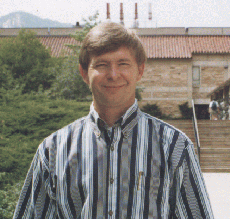 Professor Cumalat
is an experimental elementary particle
physicist. His research has involved the study of the strong
interaction production mechanisms and the subsequent weak decay of
charm and beauty states. Of particular interest is the quark mixing
between the meson-antimeson states and establishing the spectra of
charm baryon excited states. His
research has been performed at Fermi National Accelerator Laboratory in
Illinois in experiments E687 and FOCUS.
During the past several years Professor
Cumalat has served as a spokesman for these projects. Professor
Cumalat is also involved in the development of new detectors and
techniques to be used for elementary particle detection. In 2005,
Professor Cumalat joined the CMS experiment at CERN where he is working
on the forward pixel project. The Colorado group is involved in the
commissioning of the forward pixel detector.
Professor Cumalat can be reached at
.
See current Curriculum Vitae.
Professor Cumalat
is an experimental elementary particle
physicist. His research has involved the study of the strong
interaction production mechanisms and the subsequent weak decay of
charm and beauty states. Of particular interest is the quark mixing
between the meson-antimeson states and establishing the spectra of
charm baryon excited states. His
research has been performed at Fermi National Accelerator Laboratory in
Illinois in experiments E687 and FOCUS.
During the past several years Professor
Cumalat has served as a spokesman for these projects. Professor
Cumalat is also involved in the development of new detectors and
techniques to be used for elementary particle detection. In 2005,
Professor Cumalat joined the CMS experiment at CERN where he is working
on the forward pixel project. The Colorado group is involved in the
commissioning of the forward pixel detector.
Professor Cumalat can be reached at
.
See current Curriculum Vitae.
Senarath P. de Alwis
 Professor de Alwis is a theoretical physicist whose main
interests are in supersymmetry breaking, string theory and
quantum gravity. In the last few years his focus has been on flux
compactifications of string theory, their phenomenology and
cosmology. In the last year he has worked mainly on different
mechanisms for communicating supersymmetry breaking to the (TeV
scale) observable sector and their possible implications for
physics at the Large Hadron Collider (LHC)
at CERN Geneva. Professor de Alwis can be reached at
.
See current Curriculum Vitae.
Professor de Alwis is a theoretical physicist whose main
interests are in supersymmetry breaking, string theory and
quantum gravity. In the last few years his focus has been on flux
compactifications of string theory, their phenomenology and
cosmology. In the last year he has worked mainly on different
mechanisms for communicating supersymmetry breaking to the (TeV
scale) observable sector and their possible implications for
physics at the Large Hadron Collider (LHC)
at CERN Geneva. Professor de Alwis can be reached at
.
See current Curriculum Vitae.
Tom DeGrand
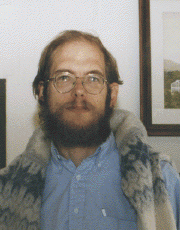 Professor Tom DeGrand
is a theoretical physicist interested mostly
in particle physics, specifically in the problem of quark
confinement. Because quark confinement is a strong interaction
phenomenon, conventional techniques such as perturbation theory
cannot be applied to study it. Instead, he models the strong
interactions using a supercomputer: a small region of space,
hopefully larger than the volume of a typical bound state of
quarks, is broken up into a lattice of points, quark and gluon
fields are introduced on the sites and links of the lattice, and
then they are allowed to interact. Examples of calculations that
he has carried out are the predictions of the masses of bound
states of quarks and gluons, of properties of the bound states such
as decay amplitudes or other matrix elements, and of the behavior
of quark matter at extreme temperatures, the quark-gluon plasma.
Professor DeGrand can be reached at
.
See current Curriculum Vitae.
Professor Tom DeGrand
is a theoretical physicist interested mostly
in particle physics, specifically in the problem of quark
confinement. Because quark confinement is a strong interaction
phenomenon, conventional techniques such as perturbation theory
cannot be applied to study it. Instead, he models the strong
interactions using a supercomputer: a small region of space,
hopefully larger than the volume of a typical bound state of
quarks, is broken up into a lattice of points, quark and gluon
fields are introduced on the sites and links of the lattice, and
then they are allowed to interact. Examples of calculations that
he has carried out are the predictions of the masses of bound
states of quarks and gluons, of properties of the bound states such
as decay amplitudes or other matrix elements, and of the behavior
of quark matter at extreme temperatures, the quark-gluon plasma.
Professor DeGrand can be reached at
.
See current Curriculum Vitae.
Oliver DeWolfe
 Oliver DeWolfe is an assistant professor of theoretical
particle physics. His research interests are in string
theory and its application to phenomenology and cosmology.
Professor DeWolfe received his undergraduate degree in physics
and astronomy from
Wesleyan University,
and went to graduate school in physics at
the Massachusetts Institute of Technology.
Before coming to Boulder, he held postdoctoral
research positions at
the Kavli Institute of Theoretical Physics
at
the University of California at Santa Barbara
and at Princeton Unversity.
Professor DeWolfe can be reached at
.
See current Curriculum Vitae.
Oliver DeWolfe is an assistant professor of theoretical
particle physics. His research interests are in string
theory and its application to phenomenology and cosmology.
Professor DeWolfe received his undergraduate degree in physics
and astronomy from
Wesleyan University,
and went to graduate school in physics at
the Massachusetts Institute of Technology.
Before coming to Boulder, he held postdoctoral
research positions at
the Kavli Institute of Theoretical Physics
at
the University of California at Santa Barbara
and at Princeton Unversity.
Professor DeWolfe can be reached at
.
See current Curriculum Vitae.
William T. Ford
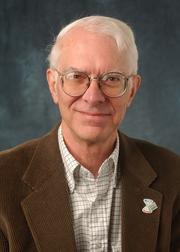 Professor Bill Ford
is an experimentalist in elementary particle physics. He
currently collaborates in the Compact Muon Solenoid (CMS) experiment
operating at the European Organization for Nuclear Research (CERN)
laboratory in Switzerland, and in the BaBar experiment at the SLAC
National Accelerator Laboratory in California. The goals of this
research are to elucidate the elementary interactions of quarks and
leptons. The BaBar experiment has produced a rich variety of
findings about B mesons, charm mesons and baryons, and tau
leptons. It is designed particularly for the study of CP
symmetry violation in B meson decays. The CMS experiment is
exploring the new energy frontier opened up with the advent of
the CERN Large Hadron Collider (LHC).
Professor Ford in collaboration with CU faculty colleagues and the
group's undergraduate and graduate students and postdocs working in
CMS investigate multi-lepton, and heavy-flavored multi-jet
signatures for new particles, such as those predicted by the
SUperSYmmetry theory. The group's physics interests at BaBar
include a search for
B meson decays to the relatively rare "charmless" final
states. As members of the CLEO and BaBar collaborations they have
discovered a number of new modes, and studied their CP
symmetry violation properties.
Professor Ford can be reached at
.
See current Curriculum Vitae.
Professor Bill Ford
is an experimentalist in elementary particle physics. He
currently collaborates in the Compact Muon Solenoid (CMS) experiment
operating at the European Organization for Nuclear Research (CERN)
laboratory in Switzerland, and in the BaBar experiment at the SLAC
National Accelerator Laboratory in California. The goals of this
research are to elucidate the elementary interactions of quarks and
leptons. The BaBar experiment has produced a rich variety of
findings about B mesons, charm mesons and baryons, and tau
leptons. It is designed particularly for the study of CP
symmetry violation in B meson decays. The CMS experiment is
exploring the new energy frontier opened up with the advent of
the CERN Large Hadron Collider (LHC).
Professor Ford in collaboration with CU faculty colleagues and the
group's undergraduate and graduate students and postdocs working in
CMS investigate multi-lepton, and heavy-flavored multi-jet
signatures for new particles, such as those predicted by the
SUperSYmmetry theory. The group's physics interests at BaBar
include a search for
B meson decays to the relatively rare "charmless" final
states. As members of the CLEO and BaBar collaborations they have
discovered a number of new modes, and studied their CP
symmetry violation properties.
Professor Ford can be reached at
.
See current Curriculum Vitae.
Anna Hasenfratz
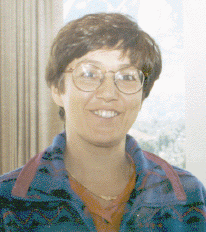 Professor Hasenfratz's is a high energy theoretical physicist. Her
research interest is the study of the properties of quantum field
theoretical models like QCD that is believed to describe the strong
interactions of elementary particles or the so called Standard
Model that describes weak interactions and predicts the existence
of the WB1 and Z bosons and the yet undiscovered Higgs particle.
The perturbative (small coupling) properties of these models can be
studied with standard analytical technics (perturbation theory),
but their strong coupling properties are non-perturbative and
require a different treatment. Professor Hasenfratz's research
concentrates on the non-perturbative properties quantum field
theories, mainly QCD. Non-perturbative studies frequently require
computer simulations but the emphasis is always on the physical
picture and understanding of the physical phenomena.
Professor Hasenfratz can be reached at
.
See current Curriculum Vitae.
Professor Hasenfratz's is a high energy theoretical physicist. Her
research interest is the study of the properties of quantum field
theoretical models like QCD that is believed to describe the strong
interactions of elementary particles or the so called Standard
Model that describes weak interactions and predicts the existence
of the WB1 and Z bosons and the yet undiscovered Higgs particle.
The perturbative (small coupling) properties of these models can be
studied with standard analytical technics (perturbation theory),
but their strong coupling properties are non-perturbative and
require a different treatment. Professor Hasenfratz's research
concentrates on the non-perturbative properties quantum field
theories, mainly QCD. Non-perturbative studies frequently require
computer simulations but the emphasis is always on the physical
picture and understanding of the physical phenomena.
Professor Hasenfratz can be reached at
.
See current Curriculum Vitae.
K.T. Mahanthappa
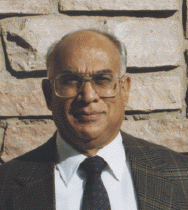 Professor Mahanthappa's research interests are in the areas of
inflation, supersymmetry, and unified theories. Recent
research is on the phenomenology of supersymmetric models including
fermion (quarks, charged leptons and neutrinos) masses and mixing
using GUTs. Professor Mahanthappa is the general girector for
The Theoretical Advanced Study Institute in Elementary Particle
Physics (TASI) held each summer at the University of Colorado.
Professor Mahanthappa can be reached at
.
See current Curriculum Vitae.
Professor Mahanthappa's research interests are in the areas of
inflation, supersymmetry, and unified theories. Recent
research is on the phenomenology of supersymmetric models including
fermion (quarks, charged leptons and neutrinos) masses and mixing
using GUTs. Professor Mahanthappa is the general girector for
The Theoretical Advanced Study Institute in Elementary Particle
Physics (TASI) held each summer at the University of Colorado.
Professor Mahanthappa can be reached at
.
See current Curriculum Vitae.
Alysia Marino
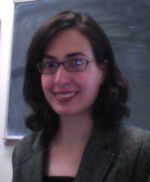 Professor Marino
has been studying neutrino oscillations for the past decade.
In the past she has been involved with the
Sudbury Neutrino Observatory
and MINOS experiments. She
is currently collaborating on the Tokai-to-Kamioka or
T2K experiment. This project is producing a beam of neutrinos at the new
J-PARC facility in Tokai, Japan. The neutrinos will travel 295 km across Japan to the Super-Kamiokande detector, where changes in the neutrino
flavor composition of the beam will be probed.
Prof. Marino can be reached at
.
More information can be found at
at her website and
the T2K-Colorado website.
Professor Marino
has been studying neutrino oscillations for the past decade.
In the past she has been involved with the
Sudbury Neutrino Observatory
and MINOS experiments. She
is currently collaborating on the Tokai-to-Kamioka or
T2K experiment. This project is producing a beam of neutrinos at the new
J-PARC facility in Tokai, Japan. The neutrinos will travel 295 km across Japan to the Super-Kamiokande detector, where changes in the neutrino
flavor composition of the beam will be probed.
Prof. Marino can be reached at
.
More information can be found at
at her website and
the T2K-Colorado website.
James G. Smith
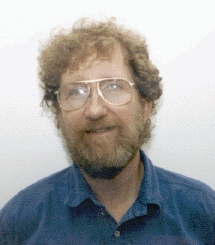 Professor Smith's
research interests are in experimental high energy
physics. As a member of the CLEO (Cornell) and BABAR (SLAC) collaborations,
he was a primary author of several measurements of rare B meson decays. Among
these was the first observation of the decays B --> pipi and B --> Kpi, which
are crucial for CP violation measurements at B Factories, and the discovery of
the decay B-->eta'K with a rate much larger than had been expected.
We measured observed CP violation in the decay B-->eta'K0, making the
first significant measurement of sin 2beta in this channel.
Presently he is involved in the CMS experiment, running at the LHC. His
primary interest is searching for SUSY with multipleptonic and
b-quark-tagged events.
Professor Smith can be reached at
.
See current Curriculum Vitae.
Professor Smith's
research interests are in experimental high energy
physics. As a member of the CLEO (Cornell) and BABAR (SLAC) collaborations,
he was a primary author of several measurements of rare B meson decays. Among
these was the first observation of the decays B --> pipi and B --> Kpi, which
are crucial for CP violation measurements at B Factories, and the discovery of
the decay B-->eta'K with a rate much larger than had been expected.
We measured observed CP violation in the decay B-->eta'K0, making the
first significant measurement of sin 2beta in this channel.
Presently he is involved in the CMS experiment, running at the LHC. His
primary interest is searching for SUSY with multipleptonic and
b-quark-tagged events.
Professor Smith can be reached at
.
See current Curriculum Vitae.
Kevin Stenson
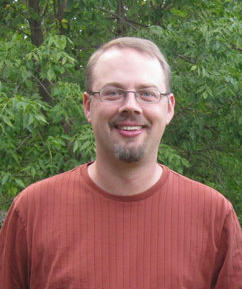 Professor Stenson
has been working in experimental high energy physics since 1995.
During his first ten years of research he worked on experiments at the
Fermi National Accelerator Laboratory
outside of Chicago. He was part of the investigation
of the properties of charm and beauty quarks as a member of the
E791,
FOCUS, and
BTeV collaborations.
In May, 2005 he joined the CU faculty and began working on the
CMS (Compact Muon Solenoid)
experimen, located inside the
Large Hadron Collider (LHC)
at CERN
in Geneva, Switzerland. Professor Stenson works on track reconstruction and
studies of the production and decay of b-hadrons.
Professor Stenson can be reached at
.
More information is available from his Curriculum Vitae and web page.
Professor Stenson
has been working in experimental high energy physics since 1995.
During his first ten years of research he worked on experiments at the
Fermi National Accelerator Laboratory
outside of Chicago. He was part of the investigation
of the properties of charm and beauty quarks as a member of the
E791,
FOCUS, and
BTeV collaborations.
In May, 2005 he joined the CU faculty and began working on the
CMS (Compact Muon Solenoid)
experimen, located inside the
Large Hadron Collider (LHC)
at CERN
in Geneva, Switzerland. Professor Stenson works on track reconstruction and
studies of the production and decay of b-hadrons.
Professor Stenson can be reached at
.
More information is available from his Curriculum Vitae and web page.
Steve Wagner
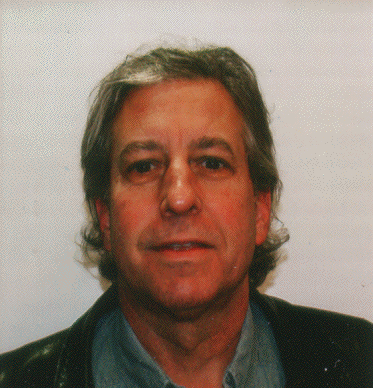 Professor Steve Wagner
joined the group in 2005, moving from a
permanent staff position at SLAC. Steve was a postdoc in our group
in the Mark II/SLC era and is a current BaBar collaborator. He is
now playing a major role in the CMS experiment's tracking group and
is also involved in research on the proposed International Linear
Collider.
Professor Wagner can be reached at
See current Curriculum Vitae.
Professor Steve Wagner
joined the group in 2005, moving from a
permanent staff position at SLAC. Steve was a postdoc in our group
in the Mark II/SLC era and is a current BaBar collaborator. He is
now playing a major role in the CMS experiment's tracking group and
is also involved in research on the proposed International Linear
Collider.
Professor Wagner can be reached at
See current Curriculum Vitae.
Eric D. Zimmerman
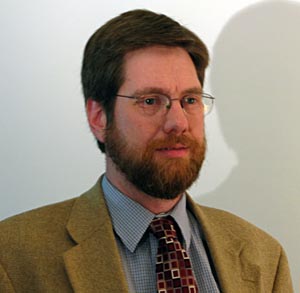 Professor Zimmerman
joined the Colorado HEP group in 2001.
His field of interest is experimental
neutrino physics and currently centers on two neutrino
experiments:
E898
(BooNE) at Fermilab,
and T2K at
J-PARC.
Prof. Zimmerman can be reached at
.
More information about the neutrino group can be found
at http://hep-neutrino.colorado.edu.
Professor Zimmerman
joined the Colorado HEP group in 2001.
His field of interest is experimental
neutrino physics and currently centers on two neutrino
experiments:
E898
(BooNE) at Fermilab,
and T2K at
J-PARC.
Prof. Zimmerman can be reached at
.
More information about the neutrino group can be found
at http://hep-neutrino.colorado.edu.
Uriel Nauenberg (emeritus)
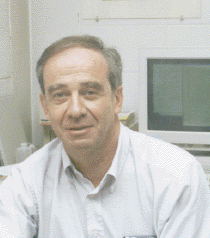 Emeritus Professor Nauenberg
has made accurate tests of the Standard
Model using polarized electron annihilations with positrons in
the Z0 energy scale at the Stanford Linear Accelerator Center.
These series of experiments have now come to an end. He is a
member of the BaBar Collaboration that has studied the CP
violation phenomena in the b quark sector. Prof. Nauenberg is also
involved in the CMS experiment at CERN with an
interest in the search for Supersymmetry. Long range he is
involved in the study of the potential of a high energy electron-positron
linear collider. The purpose of the collider would be to study the
physics beyond the Standard Model. He is particularly interested
in uncovering signals indicating the existence of supersymmetry.
Prof. Nauenberg is carrying out detector development associated with
a Linear Collider. He is working on the design of a special geometric
arrangement of a scintillator/tungsten based electromagnetic/hadronic
calorimeter with Silicon Photo Detectors as the readout medium. He is
also working on the very forward calorimeter (BEAM-CAL) that will
detect the presence of the "two-photon process", a serious background
in the measurement of the masses of Supersymmetric particles.
The work of his students in Supersymmetry can be found at
SUSY .
Professor Nauenberg can be reached at
.
See current Curriculum Vitae.
Emeritus Professor Nauenberg
has made accurate tests of the Standard
Model using polarized electron annihilations with positrons in
the Z0 energy scale at the Stanford Linear Accelerator Center.
These series of experiments have now come to an end. He is a
member of the BaBar Collaboration that has studied the CP
violation phenomena in the b quark sector. Prof. Nauenberg is also
involved in the CMS experiment at CERN with an
interest in the search for Supersymmetry. Long range he is
involved in the study of the potential of a high energy electron-positron
linear collider. The purpose of the collider would be to study the
physics beyond the Standard Model. He is particularly interested
in uncovering signals indicating the existence of supersymmetry.
Prof. Nauenberg is carrying out detector development associated with
a Linear Collider. He is working on the design of a special geometric
arrangement of a scintillator/tungsten based electromagnetic/hadronic
calorimeter with Silicon Photo Detectors as the readout medium. He is
also working on the very forward calorimeter (BEAM-CAL) that will
detect the presence of the "two-photon process", a serious background
in the measurement of the masses of Supersymmetric particles.
The work of his students in Supersymmetry can be found at
SUSY .
Professor Nauenberg can be reached at
.
See current Curriculum Vitae.